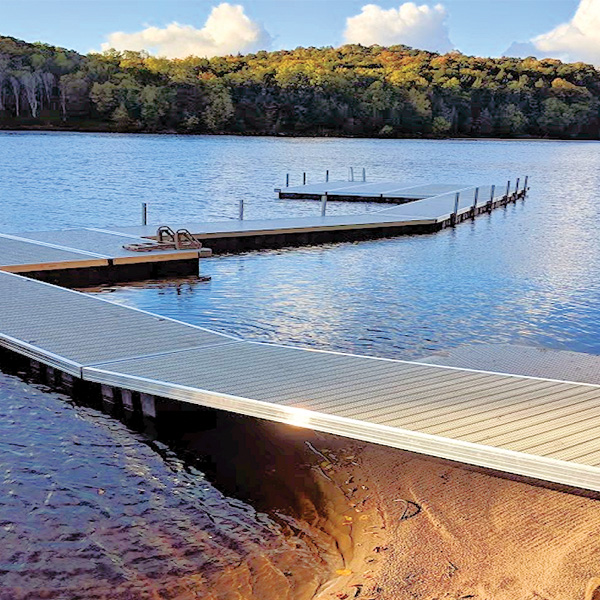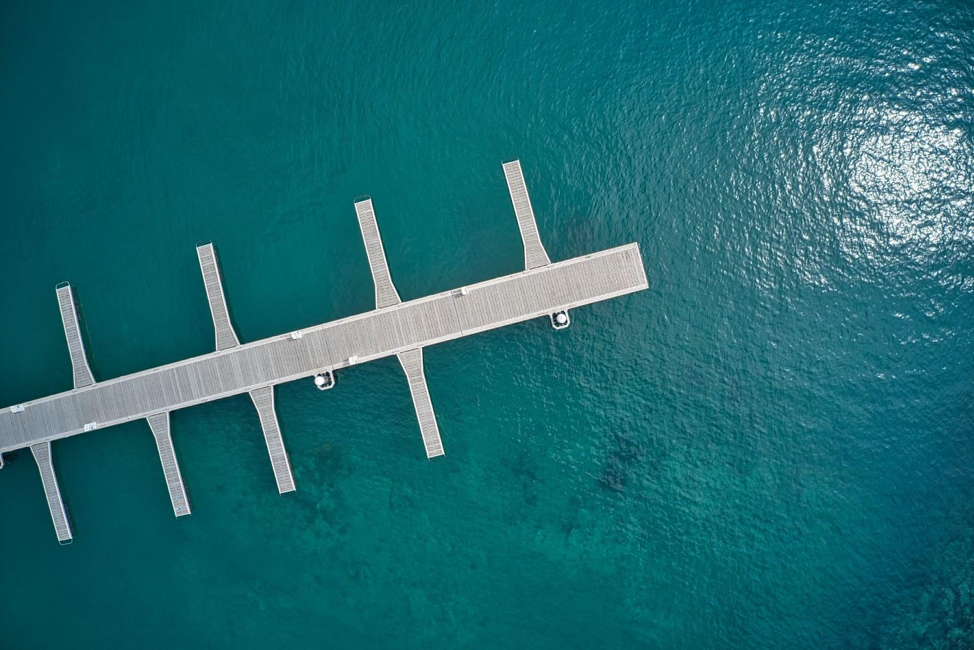Upgrade Your Waterfront With Durable Floating Docks
Upgrading your waterside with sturdy floating docks can substantially enhance both functionality and appearances, providing a flexible remedy for various water activities. With a variety of products available, including low-maintenance alternatives and typical wood, choosing the ideal dock can enhance your personal style and satisfy functional demands.
Benefits of Floating Docks
Floating docks offer a multitude of benefits that improve their appeal for numerous maritime applications. Unlike standard fixed docks, floating docks increase and fall with the trend, guaranteeing consistent access for boats and boat no matter of environmental problems.
Additionally, floating docks are less complicated to transfer and install, giving versatility for seasonal or temporary usage. Their modular layout permits modification to fit particular demands, whether for personal marinas, residential beachfronts, or commercial applications.
Moreover, floating docks develop marginal disruption to the aquatic atmosphere, maintaining local environments and lowering the possibility of disintegration. They additionally offer improved safety and security and stability for users, as their buoyant nature supplies an extra forgiving surface than stiff frameworks.
Furthermore, floating docks can assist in a varied variety of tasks, such as fishing, swimming, and recreational boating, making them a useful property for beachfront growth. Their versatility and functionality make floating docks a favored option for a selection of naval tasks.
Picking the Right Products
Picking appropriate products for floating docks is essential to their long life, efficiency, and general efficiency. When selecting materials, think about elements such as environmental exposure, maintenance requirements, and architectural honesty. Usual products consist of wood, plastic, aluminum, and composite options, each offering distinctive benefits and negative aspects.
Timber, while visually pleasing, needs regular maintenance to prevent rot and degeneration. Pressure-treated timber can improve sturdiness, however it may still catch water damages gradually. Plastic drifts, commonly made from high-density polyethylene, are resistant to deterioration and need minimal maintenance, making them an eye-catching selection for low-maintenance applications.
Aluminum is another sensible choice, understood for its strength and light-weight properties. It is immune to rust and can withstand rough weather condition conditions, although it might be much more expensive than various other materials. Compound materials incorporate the most effective characteristics of timber and plastic, providing a resilient and low-maintenance alternative that resembles the appearance of timber without the connected downsides.
Eventually, the selection of product should line up with the intended use, ecological considerations, and spending plan restrictions, making certain a long lasting and functional floating dock that fulfills your particular demands.
Installation Refine Overview
The successful installment of a floating dock depends on careful planning and implementation, ensuring that it runs effectively in its designated setting. The very first step entails evaluating website problems, including water depth, coastline features, and prevailing climate patterns, which will educate the dock design and anchoring system.
Adhering to the website evaluation, the following phase is to prepare the floating dock parts. This consists of setting up the structure, securing floats, and connecting any kind of necessary hardware. It is important to make certain that all links are durable and water-resistant to stand up to aquatic problems.
As soon as the dock is assembled, the setup procedure starts with positioning the dock in the water. This can involve a crane or other lifting equipment, especially for larger structures. Proper positioning is vital for performance and security.

Upkeep Tips for Longevity
Normal maintenance is essential for making sure the why not check here longevity and ideal performance of a drifting dock. To achieve this, begin with regular evaluations a minimum of twice a year, concentrating on the integrity of the dock's framework, including the flotation tools and connecting equipment. Look for indications of damage, deterioration, or wear, and address any kind of issues immediately to stop additional deterioration.
Cleaning up is one more critical element of upkeep. Get rid of debris, algae, and barnacles from the dock's surface to stop unsafe conditions and maintain aesthetic charm. Make use of a soft brush and a moderate cleaning agent to stay clear of harming the dock's materials.
Additionally, make sure that the dock is effectively secured and safeguarded to withstand seasonal changes in water levels and climate condition. Inspect the anchoring system for security and make my site changes as essential.
Enhancing Your Outdoor Aesthetic
To create a visually appealing outdoor space, integrating a floating dock can substantially boost the total visual of your beachfront residential or commercial property. Floating docks are not only functional but can also serve as a striking focal point that complements the all-natural environments - floating dock services. Readily available in numerous products and styles, these docks can be customized to match your residential or commercial property's architectural design and landscape
The enhancement of ornamental aspects, such as integrated lighting or stylish barriers, better raises the dock's aesthetic charm. Think about using natural timber surfaces, which blend seamlessly with the setting, or going with contemporary materials like light weight aluminum or composite outdoor decking that provide a sleek, modern appearance.
Tactically placing planters or seating locations on or around the dock can develop inviting spaces that urge leisure and pleasure of waterfront views. In addition, integrating colors and appearances that balance with your landscape will develop a cohesive visual throughout your outside location.

Final Thought

Upgrading your beachfront with resilient floating docks can considerably boost both functionality and visual appeals, offering a functional service for numerous water tasks. Unlike conventional set docks, floating docks increase and loss with the tide, guaranteeing regular accessibility for boats and watercraft no matter of ecological conditions.Selecting proper products for floating docks is vital to their durability, efficiency, and total performance.Once the dock is put together, the setup procedure starts with placing the dock in the water.In recap, floating docks offer various advantages, including versatility to water degree adjustments and a selection of material options.
Comments on “Crafting Custom Solutions: Why a Floating Dock Builder is Important for Distinct Requirements”